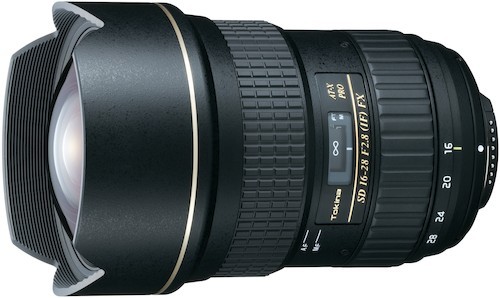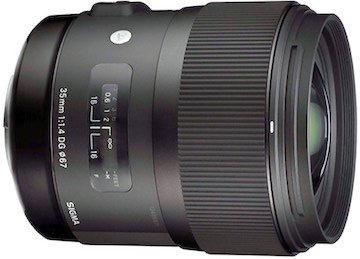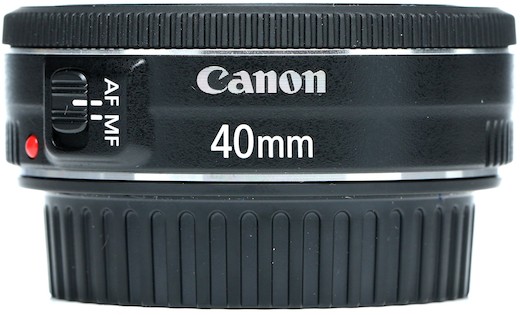Recommendations
The Best Lens Bargains
Increasing vision is increasingly expensive. – R. A. Janek (actually Michael Crichton)
For the last year or so, it seems like almost every new lens release has been accompanied by sticker shock. The manufacturers are businessmen and they know when we’ve been salivating at the promise of a new wonder lens. They know we”ll be willing to (at least some of us) pay a ridiculous amount to put that slightly better lens in front of our camera.
Somewhat lost in the hundreds of Internet threads about whether this-or-that awesome lens is worth its ridiculous price, though, there are some good bargains to be had. In fact, right now there may be more excellent lens bargains available than at any time I can recall. But let’s define real bargains for a minute.
A bargain is NOT finding a $2,500 lens for $1,500. That is a scam and doesn’t happen in the real world. A bargain is finding a lens that does nearly as well as the best possible lens, or does some things every bit as well as the best possible lens, at a fraction of the cost.
In some cases, you can get a good bargain even if you limit yourself to the three-zooms-to-cover-every-boring-possible-focal-length kit. For others, getting a great bargain means leaving your comfort zone a bit; perhaps changing lenses more frequently, or correcting some distortion in post-processing. Doing this, though, especially if you are taking the first timid steps away from the “three zooms” approach, may be the best thing that can happen to your photography.
Bargains for Nikon
Nikon is prime bargain-shopper territory this year, folks. It seems there’s a perfect storm for Nikon shooters. Nikon has released a number or really good, reasonably priced lenses. Third-party developers have added some, too. As if this wasn’t enough, Nikon is exhibiting many of the signs of a business with inventory control or projection problems — discounting things right and left. While the first two factors probably won’t change in the near future, this third one probably will, so some of the Nikon bargains may be temporary.
That being said, the recent price drops have kept a few things from being listed in my bargains. The Tamron 24-70mm f/2.8, for example, would have made the list when it was $1,300 and the Nikon 24-70mm f/2.8 was $1,900. But with the Nikon currently available at $1,660 it doesn’t make my “costs 60% of the best lens” bargain definition. I’ll also mention there aren’t any DX bargains listed largely because, while DX zooms are (usually) less expensive than FX alternatives, there are often several to choose from at roughly the same price.
Nikon AF 80-200mm f/2.8D ED
Price: $1,099

As good as the Nikon 70-200 f/2.8 VR II? Nope. Vibration control? Nope. Require cameras with built-in focus motor? Yep. But if you are using this focal length to shoot action, which a lot of people are, then the vibration control is less important because you require shorter shutter speeds. The image quality is better than third party zooms in this focal length (in the center it’s just about as good as the 70-200 VR II). If you don’t need VR, then here’s the classic bargain: 90% of the lens at less than 50% of the price.
Here’s another way to look at it: A Nikon 70-200mm VR II and Nikon D600 combo will set you back $4,394. The Nikon D800 and Nikon 80-200mm f/2.8 – only $3,896. Which one do you think gives the best images?
Tokina AT-X 16-28mm f/2.8
Price: $749
As good as the Nikon 14-24mm f/2.8? Nope. Corners soft at f/2.8? Yep. Flare like nobody’s business with the sun in the field? Sure does. Not to mention it’s matched up against the best wide-angle zoom ever made in the Nikon 14-24 f/2.8. But it has excellent resolution for an f/2.8 full-frame wide angle and even the corners are sharp at f/4. And you can buy something nice with the $1,200 you’d save compared to the 14-24mm f/2.8
Sigma 35mm f/1.4
Price: $899
Here’s a superb bargain example. It’s sharper than the Nikon 35mm f/1.4 G, Zeiss ZF 35mm f/1.4 or Zeiss 35mm f/2, and significantly less expensive. There seem to be some autofocus issues on the D800, though, so D800 owners may need to be happy using center point AF only. Then again, it certainly autofocuses better than the Zeiss lenses.
Micro-Nikkor 60mm f/2.8 AF-S G
Price: $459
I’m not a fan of the 60mm focal length for macro work. But here’s an exceptionally sharp lens, very small and easy to add to your bag that is really inexpensive given the recent price reductions.
Rokinon 14mm f/2.8
Price: $420

It’s manual focus, but at 14mm focus is basically ‘everything I can’t touch is usually in focus’ so that’s not critical. (Manual focus is the reason I didn’t include longer Rokinon lenses as bargains.) It has a lot of barrel distortion, but everything else at this focal length has some. Not as much, but some. But it’s amazingly sharp. Better than the Nikon 14mm f/2.8 prime (which is way dated) and 1/3rd of the price. I will note, this is held together inside with plastic, glue, and small screws. You won’t be using it for years. But the price of a new one is less than the price of a repair on a 14-24 f/2.8.
Nikon f/1.8 G Primes
Nikon 85mm f/1.8 AF-S G – $370
Nikon 50mm f/1.8 AF-S G – $217
Nikon 35mm f/1.8 AF-S G – $220

The Trinity of Nikon f/1.8 G primes. All are as sharp as their far more expensive f/1.4 big brothers. All three together cost about $800, half of what a Nikon 35mm f/1.4 G costs. Want to shoot world-class Nikon for under $3,000? Get a D7100 and these 3 primes and you’re set. That’s actually a bit less than, say, a Fuji X-Pro1 and 3 prime lenses.
While it didn’t quite make my ultimate bargain list, the Nikon 28mm f/1.8 G at $600 is excellent, too. If you shoot full-frame you can still get 3 superb f/1.8 primes for $1,100. That’s less than the cost of the 24-70 f/2.8 zoom and each has clearly better IQ than the zoom.
Bargains for Canon
Canon seems to have better inventory control lately, making their markdowns a bit less dramatic. Or perhaps Canon shooters have been using their disposable income on lenses instead of cameras, keeping the demand high. There are still some good bargains to be had in the Canon world, though.
Canon 70-200mm f/4L
Price: $674
You can focus on the lack of image stabilization and the f/4 aperture rather than f/2.8. But it’s sharper than the f/4 IS version and about half the price. This is one of the ‘starter’ L quality lenses I recommend to everyone. You give up some compromises for this bargain, but in decent light it can create images as good as anything in this focal range.
Tie: Tokina AT-X 16-28 f/2.8 & Canon 17-40 f/4
Price: $749 & $699, respectively
Either is right around half the price of a Canon 16-35 f/2.8L lens. The 17-40 gives up a stop for that money, but is probably a bit sharper than the 16-35 and certainly is more flare resistant. It’s also drop-dead reliable; we rarely see one break. The Tokina is just as sharp and gives you f/2.8, but you won’t be putting any filters in front of it, and it flares if the sun is anywhere in the image. Certainly, though, either provides 80% of the capability for half the money, which is my definition of a good buy.
Sigma 35mm f/1.4
Price: $899
Not quite as great a bargain for Canon shooters as for Nikon shooters since the Canon 35mm f/1.4 is a bit cheaper than the Nikon. But the Sigma is still a sharper lens for about 70% of the price.
Rokinon 14mm f/2.8
Price: $379

This one (or these three if you want to go by different brand badges) is an even better bargain for Canon shooters than for Nikon – it’s cheaper in Canon mount and the Canon 14mm f/2.8 is nearly $2,000 – higher than the Nikon 14-24 f/2.8 zoom. If you can live with the distortion it’s definitely the cheapest way to go really wide.
Canon 40mm f/2.8 Pancake
Price: $149
It’s so small and inexpensive I use it as my lens cap. It gives excellent image quality, particularly in the center. If you prefer wider aperture you might consider the slightly less expensive 50mm f/1.8, but the 40mm is quicker to focus, doesn’t have that annoying buzzing motor, and is half the size.
Canon 100mm f/2.8 Macro
Price: $499
It’s not quite as good as the Canon 100mm f/2.8L IS as far as image quality, but it’s close. Personally, this is one where I’d pay the difference because I really need the IS, but many people do not. For them, this original version is barely more than half the price and an excellent lens. I doubt it will remain available for a lot longer, though.
Canon 85mm f/1.8
Price: $359
Another excellent prime lens that can be had for a tiny fraction of what the Canon 85 f/1.2 or f/1.4 lenses cost. If you can give up the half stop of light and a bit of bokeh creaminess, you can save a lot of money and space in your bag with this one.
Canon 200mm f/2.8L Mk II
Price: $759
It’s sharper and a lot smaller than a 70-200 f/2.8 lens at half the price. I mention this one because there are a lot of sports shooters who could tape their 70-200mm lens at 200mm – every shot is taken there. This lens makes a lot of sense for them.
Bargains for Micro 4/3
There’s a bit less room for bargain hunting in m4/3, which isn’t surprising given fewer lenses and manufacturers. There’s a big group of top-level primes and zooms for around $1,000, another group at $600-$800, and then a lot of zooms at around $500. There are a couple of lenses that meet my ‘60% of the price’ bargain criteria, though.
Sigma 30mm EX DN f/2.8
Price: $149
Superb image quality and a rock-bottom price make this a must buy. It’s not a true wide-aperture prime, being f/2.8, but it’s sharp wide open.
Sigma 19mm f/2.8 EX DN
Price: $199
As above, and while it’s not quite as inexpensive, it’s still a bargain.
There are some other lenses, like the Panasonic pancakes and Olympus 45mm f/1.8 that have good prices, although I’m not sure they’re screaming bargains.
Bargains for NEX
Looking for high-quality, low-price NEX lenses is a fairly quick task, but right now there’s one bargain that may top anything else for any other system.
Sigma 30mm f/2.8 & 19mm f/2.8
Price: $199, total

Basically, unless you already have both of these, buy the package. Even if you have one, buy the package and sell the other one.
That’s Probably Not All
If you think I missed a bargain or two, feel free to add a comment. But remember the criteria aren’t just cheap lenses; it’s excellent lenses at a fraction of the price of similar quality lenses.
Roger Cicala
Lensrentals.com
March, 2013
Author: Roger Cicala
I’m Roger and I am the founder of Lensrentals.com. Hailed as one of the optic nerds here, I enjoy shooting collimated light through 30X microscope objectives in my spare time. When I do take real pictures I like using something different: a Medium format, or Pentax K1, or a Sony RX1R.
-
Steven
-
Siming
-
Brian Church
-
John
-
alek
-
simon
-
Anthony
-
Jason
-
Ben Chernicoff
-
Ben Chernicoff
-
William H
-
Don
-
Oskar K
-
Adam Maas
-
Brian Eady
-
jseliger
-
Peter Narkotsky
-
Darin Reed
-
Mescalamba
-
Aaron
-
Siming
-
Bryan Vukich
-
Mark Sirota
-
Aaron
-
Duncan
-
Jeremy












